22 Enjoying Your Future
Did you notice the gratuitous musical references scattered through this guidebook? I can’t help myself. (Holland, Dozier, and Holland 1965)
What’s music doing in a book about Coding your Future? Music is deeply connected to your mental health and your sense of wellbeing that we discussed in chapter 3. Music has the ability to comfort and connect you to others and yourself by providing motivation, gratification and empathy. There’s plenty of scientific evidence that listening to music can enhance your mood. (Zatorre, Chen, and Penhune 2007; McGilchrist 2011)
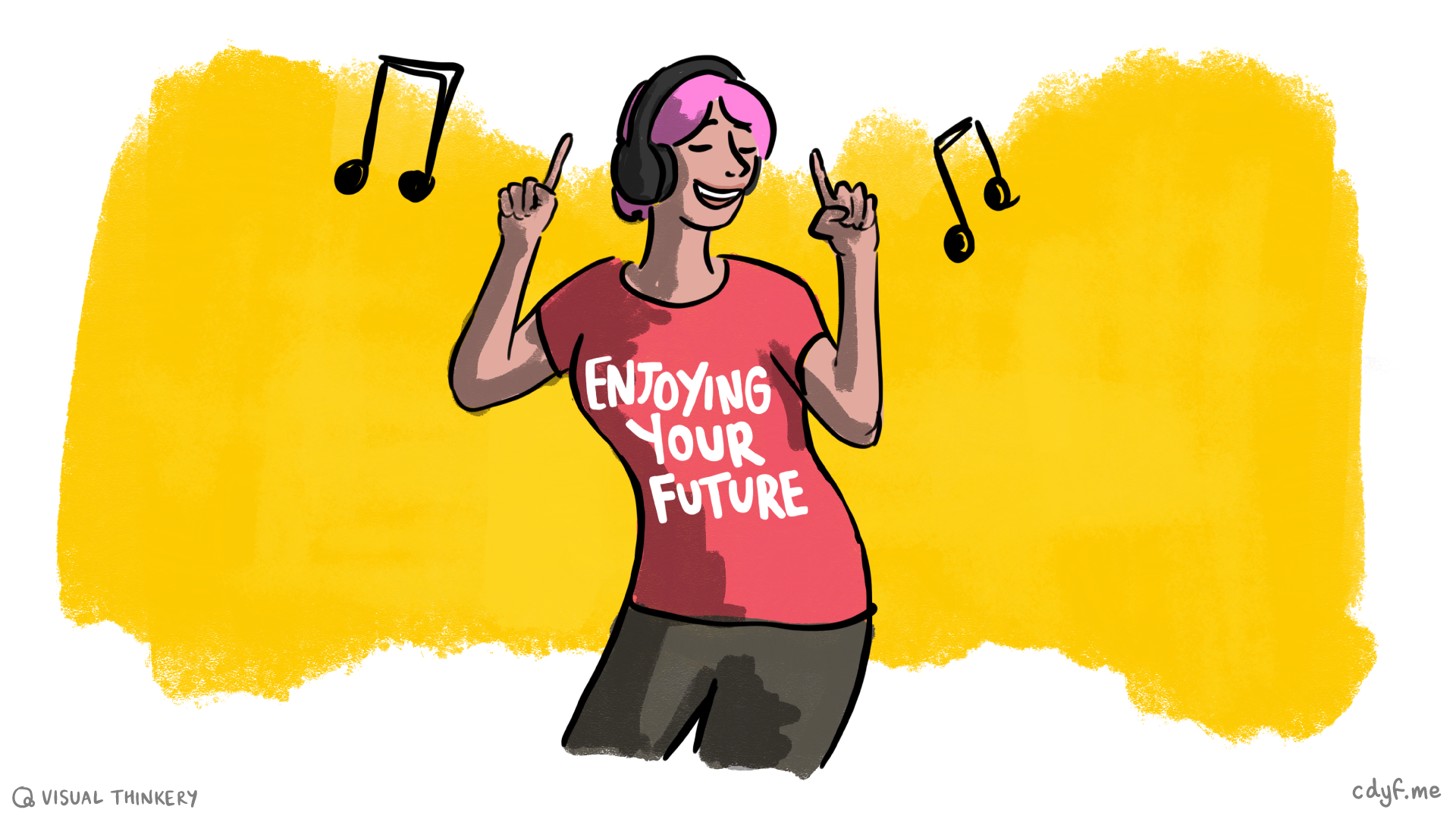
Figure 22.1: Enjoying your future sketch by Visual Thinkery is licensed under CC-BY-ND
Besides entertaining you and lifting your spirits, there’s also lot of wisdom captured in the lyrics of many songs too, offering sound advice on how you can live your life. If that wasn’t enough to convince you that music is important for your future, there’s no shortage of links between mathematics and music too. (Harkleroad 2006; Fauvel, Flood, and Wilson 2006)
This chapter explores some of the musical references scattered throughout in this guidebook in a series of playlists which are accompanied with some explanation and context to help you enjoy them.
Your future is bright, your future needs enjoying, so let’s start enjoying your future.
22.1 The Coder’s playlist
In Hearing your Future (chapter 28) we ask our guests (coders) to recommend a tune that is important to them. These are gathered together in The Coder’s Playlist and incremented by one with every new episode of the podcast. In the words of Arthur O’Shaughnessy, figure 22.2: We are the music makers and we are the dreamers of dreams. Wandering by lone sea-breakers, and sitting by desolate streams; World-losers and world-forsakers, On whom the pale moon gleams: Yet we are the movers and shakers of the world for ever, it seems. (O’Shaughnessy 1874)
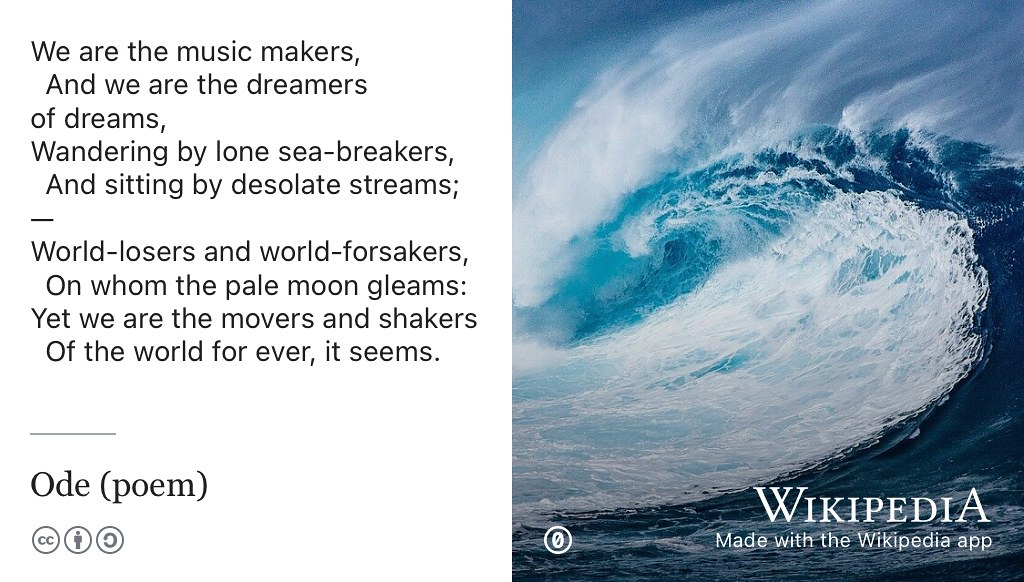
Figure 22.2: “We are the music makers and we are the dreamers of dreams” is a much quoted and sampled lyric from Ode, a poem written in the 19th Century (O’Shaughnessy 1874). The poem is often credited with being the origin of the now widely used phrase “movers and shakers”. Ode was first re-used in music by Edward Elgar in The Music Makers (Elgar 1912), and subsequently quoted by the character Willy Wonka in a film adaptation (Stuart 1971) of the children’s novel Charlie and the Chocolate Factory. (Dahl 1964) The Willy Wonka sample voiced by Gene Wilder has subsequently appeared in many recordings by artists such as 808 State (Massey et al. 1991) and Aphex Twin (James 1992). Public domain picture of an ocean wave by unknown author on Wikimedia Commons w.wiki/5QW5 adapted using the Wikipedia App
-
Do say: It’s
Music++ - Don’t say: Music isn’t important to me. You don’t really care for music do ya? (Cohen 1984)
- Listen at bit.ly/coders-playlist which redirects to a YouTube playlist
- Browse the playlist notes in section 22.1.1
22.1.1 Playlist notes
Some notes to help you enjoy music on the coder’s playlist:
- “Anything” (we chose No Idea) by rapper Don Toliver was chosen by Jason, see chapter 48. (Toliver et al. 2019)
- LOUD by singer Sofia Carson was chosen by Carmen, see chapter 45. (Carson 2022)
- November Rain by rockers Guns N’ Roses was chosen by Sneha, see chapter 46. (Rose 1992)
- Uptown Funk by Mark Ronson is in this playlist because Aidan Blowers use of this music in his teaching has inspired me, see section 50.23 Thanks Aidan 🙏 (Ronson and Mars 2014; Blowers 2015)
- Iguana by singer Inna was chosen by Alice, see chapter 43. (Apostoleanu 2018)
- As It Was by Harry Styles was chosen by Alice, who managed to sneak two songs onto the playlist, see chapter 43. (Styles, Hull, and Johnson 2022)
22.2 Turing’s electro-playlist
This playlist celebrates electronica and other computationally influenced music. In 1951, engineers of the Ferranti Mark 1 computer, implemented a hoot() function that was used to sound a prompt when input or action was required. (A. Turing 1950) Alan Turing realised that this could be reprogrammed to make different notes and created a routine that played a note of a specified pitch. (Copeland and Long 2017)
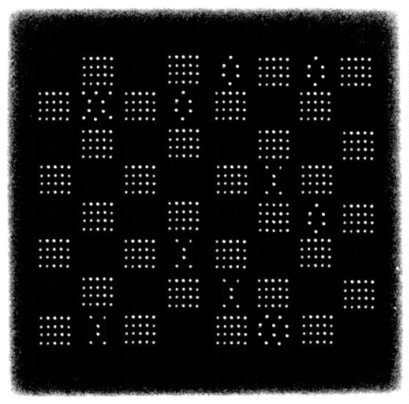


Figure 22.3: Is this the worlds first video game? Christopher Strachey’s draughts game displayed on a cathode ray tube in 1952. When the game finished, the Ferranti Mark 1 computer which ran the game, played a tune. Public domain image from Wikimedia Commons at w.wiki/5UJs
Using Turing’s code the computer scientist Christopher Strachey wrote programs to play music. Strachey’s first success was a version of the UK’s national anthem God Save the King (Archist 1745) which was played at the end of what is very probably the first video ever game created, draughts shown in figure 22.3. (Link 2012) The earliest existing recording of computer-generated music was made in 1951 by the BBC shown in figure 22.4.
Figure 22.4: The first known recording of computer music made in 1951, available from the British Library and restored by Jack Copeland and Jason Long in 2016. (Copeland and Long 2016, 2017) (if the clip doesn’t load properly, try refreshing this page)
In the recording you can hear the Ferranti Mark 1 computer playing three songs:
You can listen this music which was restored by Jack Copeland and Jason Long in 2016. Z. Byte (2016)
Computers have been changing the way we create, distribute and listen to music ever since. Sing like no one is listening, love like you never been hurt and dance like no one is watching:
- Do say: Turn it up DJ!
- Don’t say: Why can’t they play real musical instruments, you know, analogue ones?
- Listen at youtube.com/playlist?list=PLyxEvjuBJhvCC2vbFMosi5l-IXPPSKwck
22.3 The Lancashire playlist
This playlist starts and ends with one of the best known bands on the planet: The Beatles shown in figure 22.5. You will find plenty of other Lancashire lads, lasses and even Lucifer in here too. (M. E. Smith and Hanley 1986)
Which cities are actually in Lancashire, I hear you say? Don’t let bureaucrats trick you into believing that:
- Manchester is in a region known as “Greater Manchester”
- Liverpool is in a regional known as “Merseyside”
These are meaningless bureaucratic abstractions, not real places that people identify with! Liverpool and Manchester have always been, and will always be, in Lancashire. Aye! (Groom 2022; Gatenby and Gill 2011)
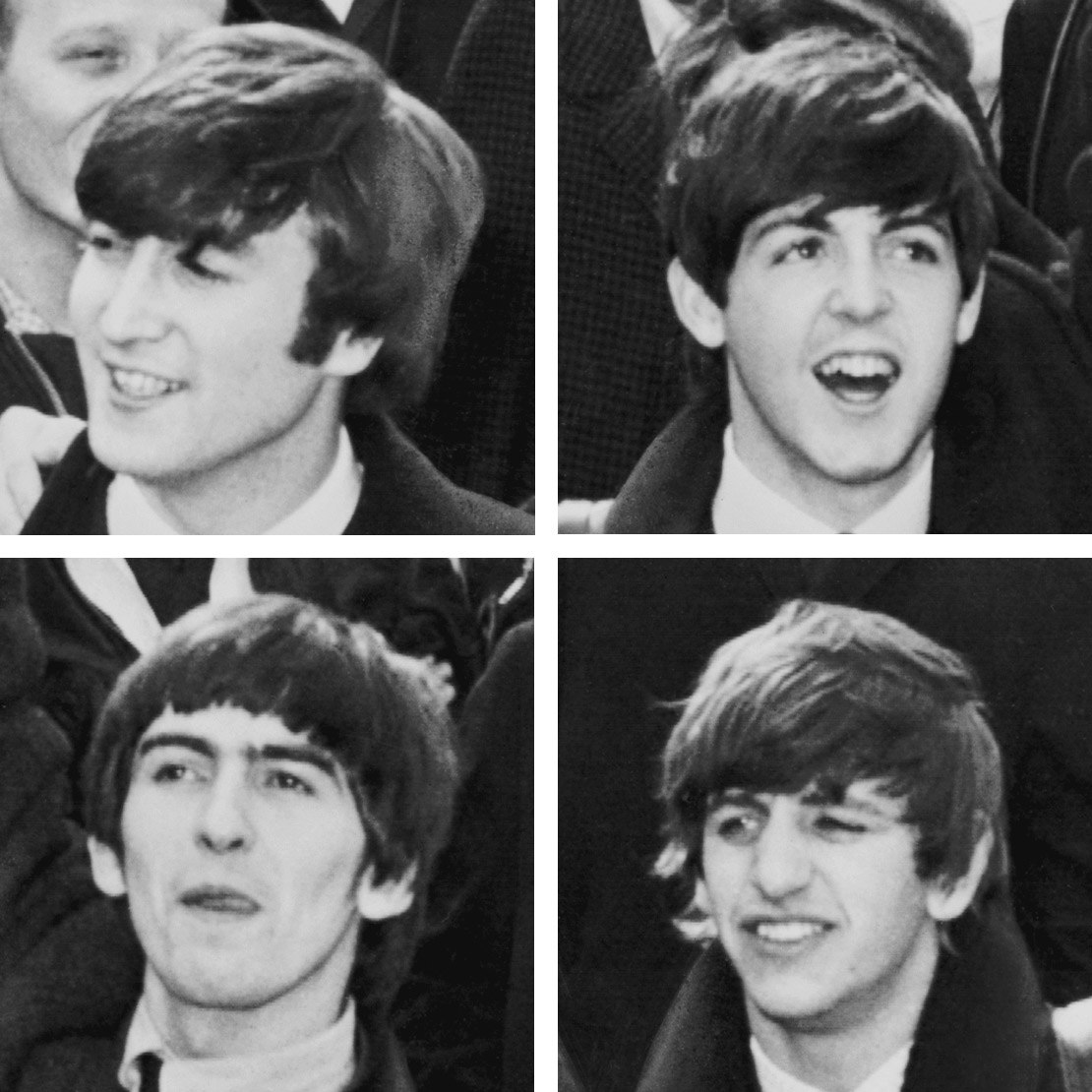


Figure 22.5: John, Paul, Ringo and George (aka The Beatles) are from Liverpool in Lancashire. Public domain image of The Beatles in New York City in 1964 via Wikimedia Commons at w.wiki/5UJy
Bursting with Lancastrian Red Roses (see figure 22.7) this playlist will educate and entertain you in equal measure, while my keyboard gently weeps (Harrison 1968). To paraphrase Robbie Williams shown in figure 22.6, Let Me Entertain Educate You…
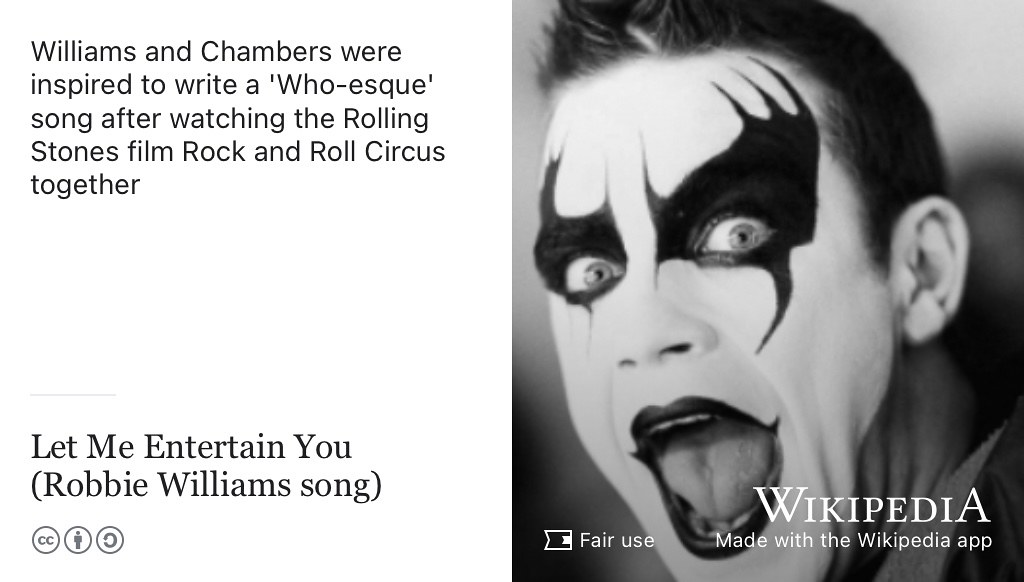
Figure 22.6: Robbie Williams and Guy Chambers were inspired to write Let Me Entertain You after watching The Rolling Stones Rock and Roll Circus. (Lindsay-Hogg 1996) “Come on, let me entertain you! Come on, let me educate you!” (R. Williams and Chambers 1997)
- Do say: Chippy tea, chippy tea, I wants a chippy tea! (Thresher et al. 2007; D. Carroll 2018)
- Don’t say: But Liverpool and Manchester aren’t even in Lancashire are they? (Hull 2019)
- Do say: This land’s the place I love and here I’ll stay (Marsden 1964)
- Listen at youtube.com/playlist?list=PLyxEvjuBJhvDvG0TRu63n3i12kR89niFJ





Figure 22.7: The Red Rose of Lancaster is a symbol of the county of Lancashire, first adopted by the House of Lancaster in the 14th century. There’s no 14th century music in the Lancashire playlist, but there’s plenty of red roses. CC BY-SA image of a red rose by Sodacan on Wikimedia Commons w.wiki/5Y4Z🌹
22.4 The Dad-rock playlist
Using the medium of rock, this playlist grumpily reminds you that “when I was your age” music was much better and it’s all gone downhill since the good old days. Nostalgia isn’t what it used to be but these classics were made by true artists using proper musical instruments, see figure 22.8. None of this social media and AI powered digital nonsense thank you very much! (Lanier 2018)
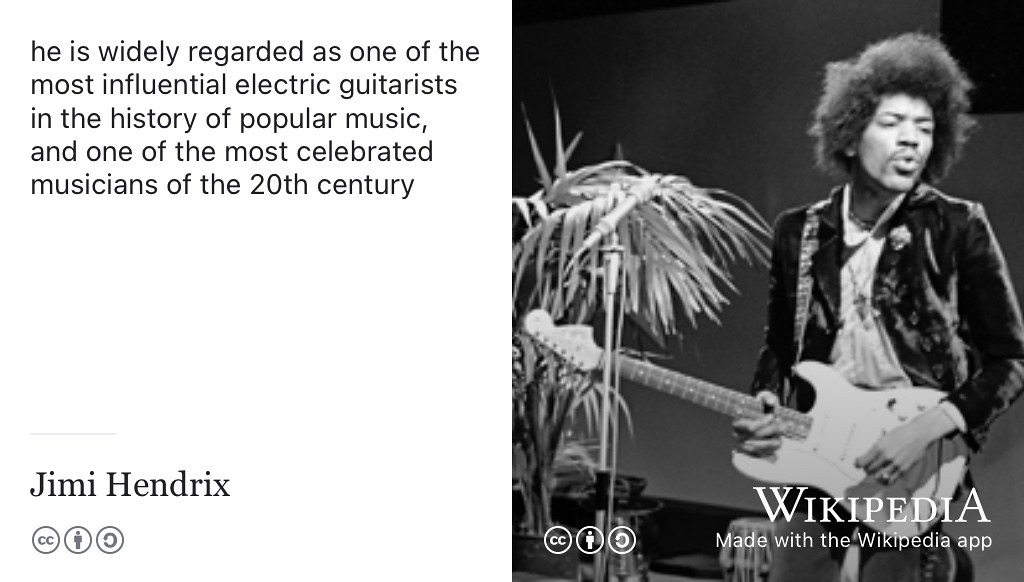
Figure 22.8: Are you experienced in Dad-rock? (Hendrix 1967) Definitions vary, but there’s plenty of men who believe this playlist includes some of the best music ever made. By real musicians. With real musical instruments. Public domain image of Jimi Hendrix performing on the Hoepla show in 1967 by A. Vente via Wikimedia Commons w.wiki/5WHj adapted using the Wikipedia App
Cherished by men of a certain age, the Dad-rock playlist thrives on past glories but is a shadow of its former self. Proponents of Dad-rock can’t understand why more people don’t enjoy these seminal tunes of yesteryear (Mitchum 2019; J. Rogers 2008):
- Do say: Expiry date: What expiry date? Classic music like this is timeless!
- Don’t say: Oh no, not this again!
- Listen at youtube.com/playlist?list=PLyxEvjuBJhvDUyr9hPvUP3IeriN8aaTW0
- Note: we’ve broadened the definition of Dad-rock to include any music that your Dad (or Grandad) might have listened to “when he was your age” …
22.5 The Indie rock playlist
Wetter and muddier than the traditional summer downpour at the Glastonbury Festival of Contemporary Performing Arts in Somerset (see figure 22.9), this playlist encourages you to swing your cardigan mournfully while shoegazing and wondering if its ever going to stop raining, either metaphorically or meteorologically: ☔️
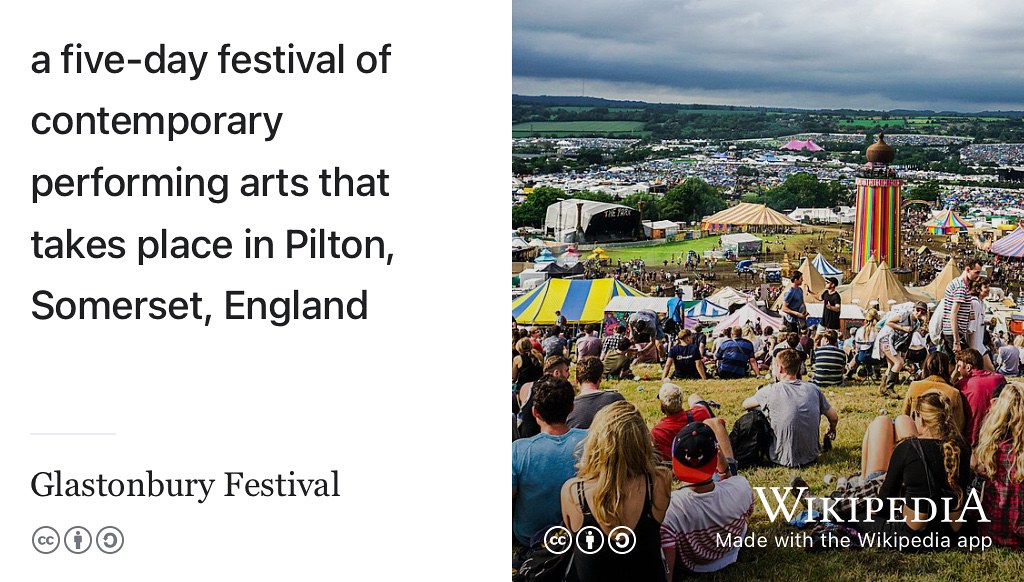
Figure 22.9: “Why Does It Always Rain on Me? Is it because I lied when I was seventeen I went to Glastonbury festival?” (Healy 1999) If you’re only happy when it rains, if you’re only happy when it’s complicated, then the indie rock playlist is for you. (Manson et al. 1995) All art is born of suffering and this playlist helps you wallow in it. Pour your misery down on me! Picture taken from the highest point at Glastonbury festival in 2016 by Czampal on Wikimedia Commons w.wiki/5WKn adapted using the Wikipedia App
- Do say: It’s indie rock and roll for me! (Flowers et al. 2004)
- Don’t say: Cheer up hun, life’s not that bad is it? (Fonarow 2010)
- Listen at youtube.com/playlist?list=PLyxEvjuBJhvBUO8jaKvJtZLuXfnKc8iz3
22.6 Summarising Your Future
Too long, didn’t read (TL;DR)? Here’s a summary:
Your future is bright, your future needs enjoying. Enjoying your future is deploying your future. Deploying your future will help you to start coding your future.
After this musical interlude, we’ll return to the more serious topic of chapter 23: Starting your Future, after returning from your break, how will you now survive and thrive in your new environment.
22.7 Thanks Jim
Thanks to Jim Miles for the descriptions of the birth of electronic music installed in the Atlas lobby and museum of the Kilburn building shown in figure 22.10. Some of the text from these displays has been adapted and re-used in section 22.2. (Miles et al. 2022; D. Turing 2022)

Figure 22.10: Panorama of the Atlas suite in the Kilburn building, Manchester which exhibits hardware from several Manchester computers such as the Atlas computer. Picture by Yours Truly.